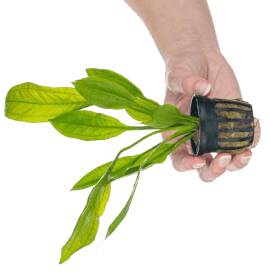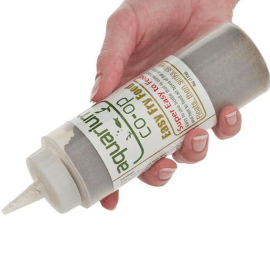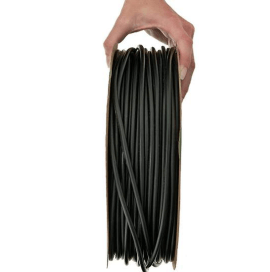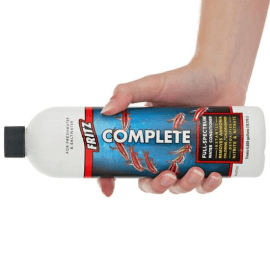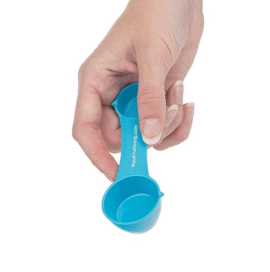Why is Easy Green raising my nitrate level?
Besides light and water, plants require an exact mix of nutrients to give them the fundamental building blocks needed to grow new leaves and roots. Macronutrients are nutrients that plants consume in large quantities (such as nitrogen, phosphorous, and potassium), whereas micronutrients are nutrients that plants need in trace amounts (such as iron, boron, and manganese). Traditionally, it was thought that fish poop and uneaten fish food were sufficient sources of nutrients for plant growth, but in reality, they do not contain all these necessary nutrients in the right ratios or amounts. Therefore, we developed Easy Green as an easy, all-in-one fertilizer to help keep plants healthy and well-fed.

As you can see in the list of nutrients above, the goal of Easy Green is to raise nitrate (or nitrogen) and other nutrients so that plants have enough to consume. In fact, the percentages of nitrate, phosphate, and potassium are higher than the rest because they are macronutrients that your plants need greater amounts of. As a result, adding Easy Green will increase the nitrate level when measured by a water test strip or kit. In fact, the goal is to dose enough Easy Green until the nitrate level reaches 50 ppm.
Are High Levels of Nitrate Dangerous?
While ammonia and nitrite can be toxic to animals at even trace amounts, nitrate is considerably less toxic. In a research paper titled Nitrate toxicity to aquatic animals, nitrate levels were raised up to 800 ppm before they became lethal to guppy fry. As a rule of thumb, we recommend keeping aquariums at 50 ppm nitrate and below.
If you have a fish tank that is heavily stocked with animals and/or does not have a lot of aquarium plants, the nitrate level produced by fish waste can naturally climb to 50 ppm and above. In this situation, many hobbyists are tempted to stop using Easy Green since it will increase the nitrate even higher. However, withholding fertilizer will end up depriving the plants of other essential nutrients besides nitrate. To prevent this from happening, use the following instructions:
- If nitrate is 50 ppm or above, do a 50% water change (or multiple 50% water changes every four days) until nitrate reaches 25 ppm at most.
- Dose 1 pump of Easy Green per 10 gallons of water. Wait a few hours and test the water again.
- The goal is to reach 50 ppm nitrate. If nitrate is still too low, repeat Step 2 to keep dosing fertilizer until you reach 50 ppm.
- Wait 3–4 days and test the water again. If nitrate is already at 75–100 ppm, you will have to do another 50% water change. Consider removing some fish or adding more plants (especially fast-growing ones) to decrease the rate at which nitrate is produced.
Are Low Levels of Nitrate Dangerous?
While fish and other aquatic animals are not affected by a lack of nitrate, plants absolutely need it to grow well. Without nitrate, plant leaves will turn yellow (especially starting at the leaf tips) and eventually melt away because the plant is consuming nutrients from its old leaves at the bottom in order to make new leaves at the top.

Signs of nitrogen deficiency
In order to avoid starving your plants, we recommend dosing 1 pump of Easy Green per 10 gallons of water with the following frequency:
- Dose once a week for low light aquariums.
- Dose twice a week for medium light aquariums.
However, if you find that your plant leaves are still turning translucent and developing holes, a customized dosing method may be needed, based on the nitrate level of the water.
- If nitrate ranges from 0–25 ppm, then add a full dose of Easy Green (according to the instructions above). Wait a few hours and test the water again.
- If nitrate is still below 50 ppm, repeat Step 1 and keep dosing fertilizer until you reach that level.
- Wait 3–4 days and test the water. Dose Easy Green again if needed to reach the goal of 50 ppm nitrate.
Record down the dates you fertilized the tank and the amounts of Easy Green used, and soon you should be able to figure out your custom dosing schedule. Just be aware that as plants and fish grow larger or are removed from the aquarium, this changes the amount of nitrate that is needed, so keep an eye on the growth of the plants and test your water to adjust the schedule as needed.
Bottom line: do not be alarmed if you see nitrate readings higher than 0 ppm. Nitrate is good and even necessary for plants. Therefore, we created Easy Green as a beginner-friendly fertilizer so you don't have to measure out a ton of supplements. Just add 1 pump per 10 gallons, and you're good to go!
For more information, see the following articles:
